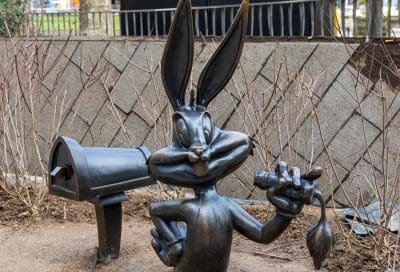Flowers have long been synonymous with romance and affection, gracing countless dates, proposals and anniversaries with their delicate presence. This tradition of gifting flowers as a romantic gesture spans cultures and centuries, touching hearts universally. But what makes flowers such a powerful symbol of love? This article explores the deep-rooted connections between floral gifts and romantic sentiments, revealing how this practice has evolved and why it continues to flourish in the hearts of lovers around the world.
The historical roots of floral romance
Origins of floral gifting
The tradition of giving flowers dates back to ancient civilizations, where flowers were not only admired for their beauty but also revered for their symbolic meanings. In ancient Greece, Rome and Egypt, flowers were associated with gods and goddesses and were used in ceremonial rites. The practice of assigning meanings to flowers began more formally during the Victorian era, when the language of flowers — or floriography — became a popular means of covert communication.
Romantic symbolism in different cultures
Across different cultures, certain flowers have held unique significance in the expression of love. Red roses, for instance, are globally recognized as a symbol of deep love and passion, thanks largely to their mythological associations with Aphrodite, the Greek goddess of love. In other cultures, such as in Japan, the delicate cherry blossom signifies the transient nature of life and beauty, echoing themes of mortality and passionate love.
The psychology behind floral gifts
Emotional impact of flowers
Studies have shown that receiving flowers can significantly impact one’s emotions, often leading to increased feelings of happiness and a sense of satisfaction in relationships. The presence of flowers triggers happy brain chemicals like dopamine, serotonin and oxytocin, which are associated with positive feelings, bonding and love.
Color psychology and flower selection
The colors of flowers also play a crucial role in their impact as romantic gestures. Red, often associated with passion and intensity, is a favorite for expressing romantic love. Pink, conveying sweetness and affection, is typically chosen for budding relationships. Meanwhile, white can symbolize purity and a new beginning, making it ideal for weddings.
Cultural Impact on the Tradition of Flower Giving
Flowers in modern romance
In contemporary times, flowers continue to be a staple in romantic gestures, from the first date to Valentine’s Day — and everything in between. They are a powerful tool for nonverbal communication, conveying messages that sometimes words alone cannot.
Influence of Media and Popular Culture
Popular culture and media have also reinforced the romantic connotations of flower-giving. Romantic films, literature and songs often depict heroes presenting flowers to their love interests, cementing their role as a timeless token of affection and adoration.
Flowers as a reflection of personal and societal values
Personalization of flower gfts
The act of selecting specific flowers and arranging them thoughtfully can convey a deep personal message from the giver to the receiver, reflecting the giver’s understanding and consideration of the receiver’s preferences and personality. This customization makes the gesture even more special and meaningful.
Flowers and environmental awareness
As society grows more environmentally conscious, the choice of sustainable and locally sourced flowers reflects broader societal values. This shift influences how people choose to express love, merging traditional romantic gestures with modern ethical considerations.
Flowers by any other name
The age-old tradition of giving flowers as a token of romance continues to hold a cherished place in our cultural and personal lives, reflecting a timeless expression of love and admiration. This practice highlights a fundamental aspect of human nature: our deep-seated impulse to communicate our most profound emotions not just through words, but through the evocative beauty of nature. Flowers — with their diverse hues, shapes and fragrances — serve as a universal language of affection. They have the unique ability to convey sentiments ranging from budding love to deep, unwavering commitment.
Each flower — whether it be a single red rose symbolizing passionate love, or a delicate bouquet of wildflowers reflecting a more nuanced affection — carries a message steeped in historical significance and personal intention. The act of selecting and giving flowers is not merely a transactional gesture but a deeply personal one that considers the preferences and feelings of both the giver and the recipient. In doing so, it strengthens bonds, enriches moments of intimacy and perpetuates a tradition that has been celebrated across generations and cultures.
As society continues to evolve, the symbolic gesture of giving flowers remains as relevant and powerful as ever, ensuring that this romantic tradition will flourish in the hearts of lovers for generations to come. It’s a testament to the enduring appeal of flowers as a profound communicator of human emotions, bridging hearts and transcending the limitations of language.
This story was created using AI technology.










